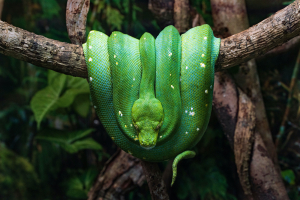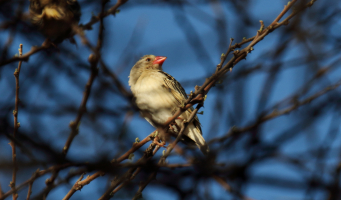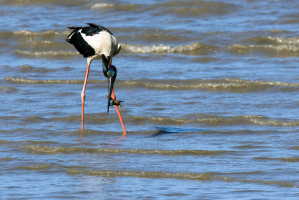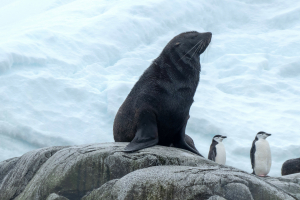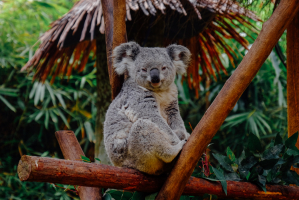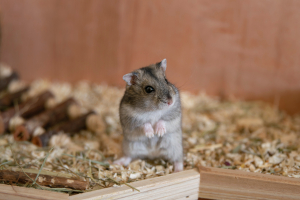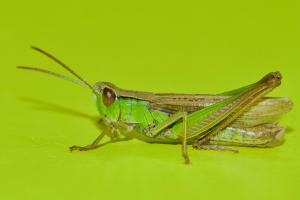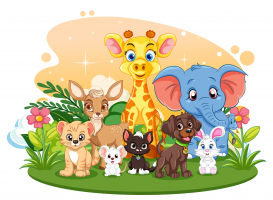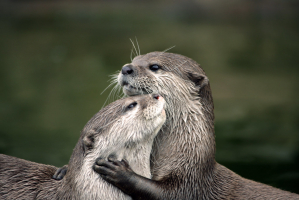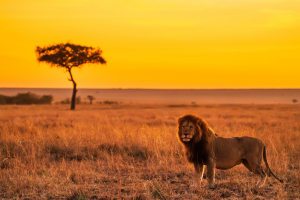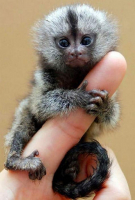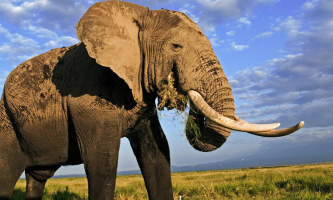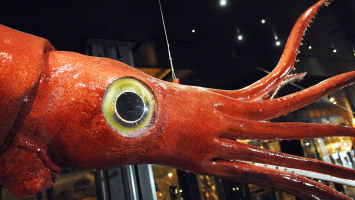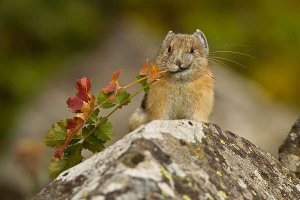Top 15 Animals That Start With M
Ever wonder what you and a monkey have in common? Yep, you guessed it - you both start with the letter M! And believe me, the animal kingdom is bursting with ... read more...creatures who share your first letter, each more fascinating than the last. Whether you're a die-hard animal lover or just curious about the world around you, grab your magnifying glass and join Toplist on this M-tastic adventure!
-
Get ready to meet a bunch of furry, swinging, banana-loving buddies! Monkeys are a diverse group of primates, with over 200 different species living in all sorts of places, from the lush rainforests of South America to the snowy mountains of Japan.
Monkeys come in all shapes and sizes, from the tiny pygmy marmoset, smaller than your hand, to the massive gorilla, who could crush a car with one hand. They have different fur colors and patterns, from the bright orange of the orangutan to the black and white of the colobus monkey. And guess what? They even have different tail styles! Some monkeys use their tails like extra legs for balance, while others have prehensile tails that can grab things and swing from branches.
What's on the monkey menu? Well, it depends on where they live. Some monkeys are mostly vegetarians, chowing down on leaves, fruits, and flowers. Others are omnivores, enjoying a mix of plants and insects. And a few brave souls, like the spider monkey, even snack on spiders and frogs! No matter what they eat, monkeys have clever ways to get their food. They can use their sharp teeth to crack open nuts, peel fruits with their nimble fingers, and even fish for termites with sticks!
Monkeys are social creatures, living in groups called troops. They spend their days playing, grooming each other, and raising their young. They have complex communication systems, using calls, facial expressions, and even body language to talk to each other. And let's not forget, they can be quite the pranksters! Some monkeys love to throw things, chase each other through the trees, and even play hide-and-seek.
They're intelligent animals with amazing senses and abilities. They can use tools, like sticks and stones, to crack open nuts or reach for food. They can also learn new things quickly and even remember things for years! Some monkeys are even wise enough to use their environment to their advantage, like building shelters from leaves or using rocks to break open nuts.
Monkeys are the charismatic acrobats of the wild, bringing laughter and curiosity wherever they go. Their diverse species, social bonds, and clever minds have earned a special place in our hearts, reminding us of the vibrant and interconnected tapestry of life in the jungles they gracefully swing through.
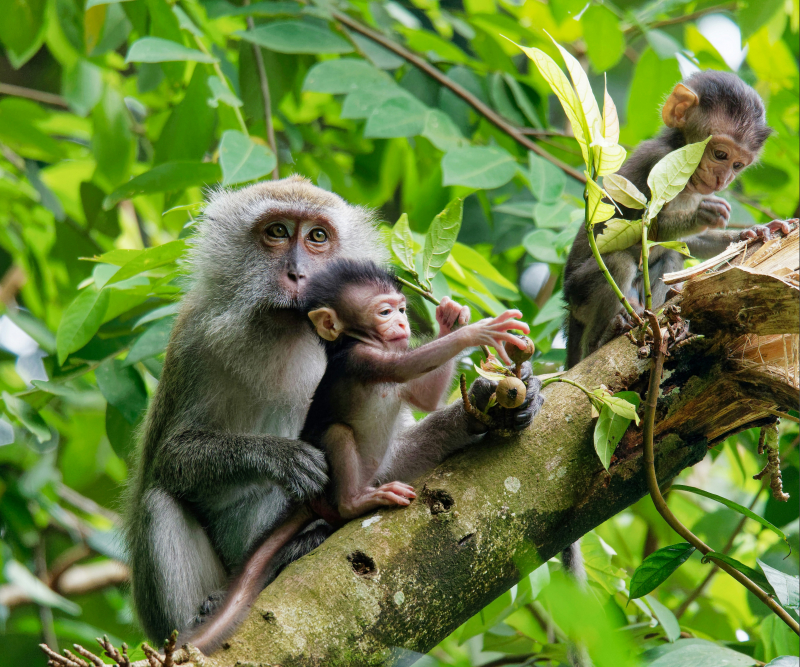
Photo by Leslie Low on Unsplash: https://unsplash.com/photos/monkeys-on-tree-branch-yzC9apz8Vns Video by @bbcearth -
Say hello to the tiny creatures that often scurry around, leaving their delicate footprints behind – mice. These tiny rodents have found their way into various nooks and crannies, adapting to different environments with impressive ease.
Mice may not build castles, but they're crafty homemakers! They love nesting in cozy spots like burrows under the ground, attics in houses, or even inside walls. They're expert climbers and runners, able to squeeze through tiny holes and navigate even the trickiest terrain. And no matter where they live, these furry friends always look for the next tasty snack.
Mice happily chow down on crumbs, seeds, fruits, and insects. Their sharp teeth and nimble paws make them excellent scavengers, able to find food even in the smallest spaces. They're also surprisingly skilled acrobats, leaping and climbing to reach the juiciest treats. But be warned, mice have a sweet tooth, so watch out for your cookies!
These guys are playful creatures, enjoying games of chase, wrestling, and grooming each other. Mice has complex communication systems, using squeaks, chirps, and body language to talk to each other. And sometimes, they might even get into mischief, gnawing on wires, exploring your drawers, or leaving tiny surprises (aka droppings) in unexpected places.
Despite their cuteness, mice can face some challenges. Predators like cats and owls love to snack on them, and humans often see them as pests. But we can learn to coexist with these tiny neighbors by sealing up entry points into our homes, using humane traps, and appreciating their role in the environment.
In a nutshell, mice are the resilient and adaptable members of the animal kingdom, making the most of their small stature and leaving a big impact on the ecosystems they inhabit. With their communal living, diverse diets, and rapid reproduction, they've become the unsung heroes, quietly contributing to the delicate balance of nature.
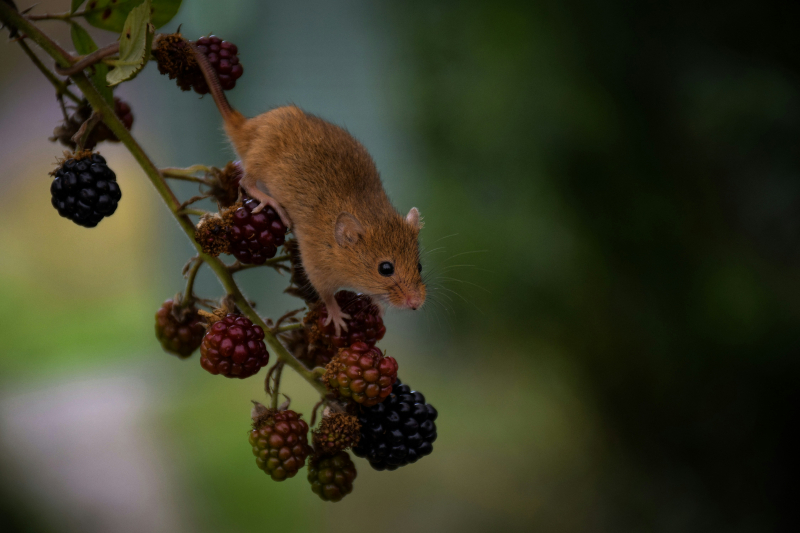
Photo by Glen Hooper on Unsplash: https://unsplash.com/photos/a-mouse-on-a-branch-with-berries-TOHHuI7cot8 Video by @VICENews -
Meet the gentle giants of the ocean, the magnificent Manta Rays. These majestic creatures gracefully glide through the underwater realms, captivating anyone lucky enough to witness their serene movements. So buckle up and prepare to be amazed by the wonders of the manta ray world!
Manta rays love warm, tropical waters, cruising the open ocean, or hanging out near coral reefs. They can be found in the Indian and Pacific Oceans, from Hawaii to Australia. These gentle giants can grow up to 30 feet wide, making them some of the largest rays in the sea. Imagine swimming alongside a creature wider than your house – pretty impressive, right?
These gentle giants are peaceful plankton munchers! They open their massive mouths as they swim, filtering tiny shrimp-like creatures called plankton from the water. Their wide fins act like giant wings, propelling them through the water while their fringed mouths strain the plankton out. It's like a moving feast for these ocean vacuum cleaners!
Don't let their filter-feeding ways fool you – manta rays are full of surprises! They're incredibly intelligent creatures with well-developed brains and complex social lives. They communicate with each other through body language and even flips and somersaults, showcasing their graceful acrobatics. Some scientists even believe they may recognize themselves in mirrors!
One remarkable feature of Manta Rays is their unique markings. Each ray has distinctive patterns on its belly, helping researchers identify individuals. It's like they've personalized their underwater attire, making each one a living masterpiece on the vast canvas of the ocean.
Manta Rays are the serene navigators of the sea, embodying grace and beauty in their underwater world. With their colossal wingspans, filter-feeding habits, and social interactions, they've become the gentle ambassadors of the ocean, silently reminding us of the wonders beneath the waves.
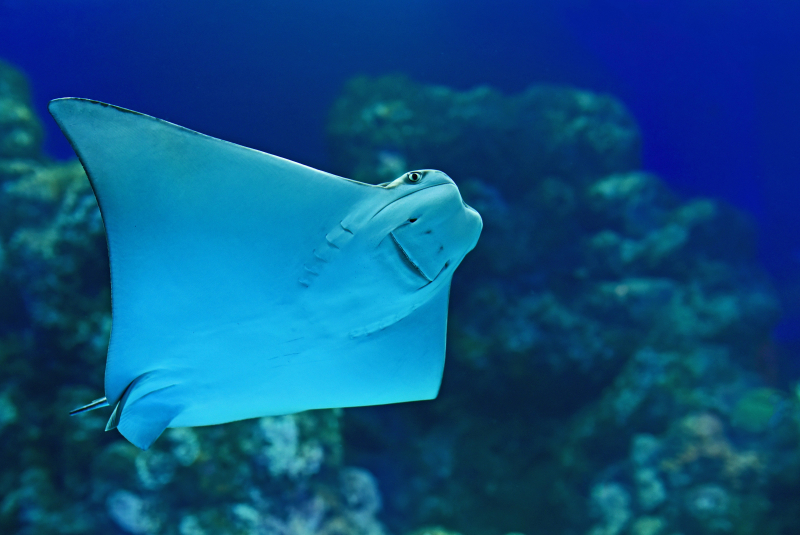
Photo by David Clode on Unsplash: https://unsplash.com/photos/stingray-near-coral-reef-HaxrCVb1FEE Video by @realscience -
Buckle up, bird lovers, because we're about to fly into the vibrant world of macaws! These feathered fireworks are more than just pretty faces – they're intelligent and playful and boast some of the most dazzling plumage in the parrot kingdom. So get ready to be dazzled by the wonders of the macaw!
Macaws call the lush rainforests of Central and South America home, where they spend their days soaring through the canopy and feasting on tropical treats. From the scarlet macaws of the Amazon to the blue-and-yellow macaws of the coastal forests, these flamboyant flyers add a splash of color to the jungle scene.
Macaws are expert foragers, cracking open nuts with their powerful beaks and feasting on fruits, seeds, and flowers. They're like the feathered chefs of the rainforest, concocting delicious meals from the diverse buffet nature provides. And don't forget their playful side – they've been known to use tools like sticks to pry open stubborn nuts, proving they're not just pretty faces!
They're social butterflies with complex communication skills. They squawk, chatter, and screech, using a variety of calls to share information, warn of danger, and even flirt with potential mates. They're also playful pranksters, enjoying acrobatics, chasing each other through the trees, and even playfully nipping at their human friends.
While their beauty has made them popular in the pet trade, it's essential to remember that Macaws are complex birds with specific needs. Conservation efforts focus on preserving their natural habitats and combating illegal trade to ensure survival in the wild.
In a nutshell, Macaws are the flamboyant artists of the avian canvas, adding a splash of color and charisma to the tropical landscapes they call home. With their vibrant plumage, sociable nature, and playful antics, they've become the feathered celebrities of the bird kingdom, enchanting anyone lucky enough to witness their aerial displays.
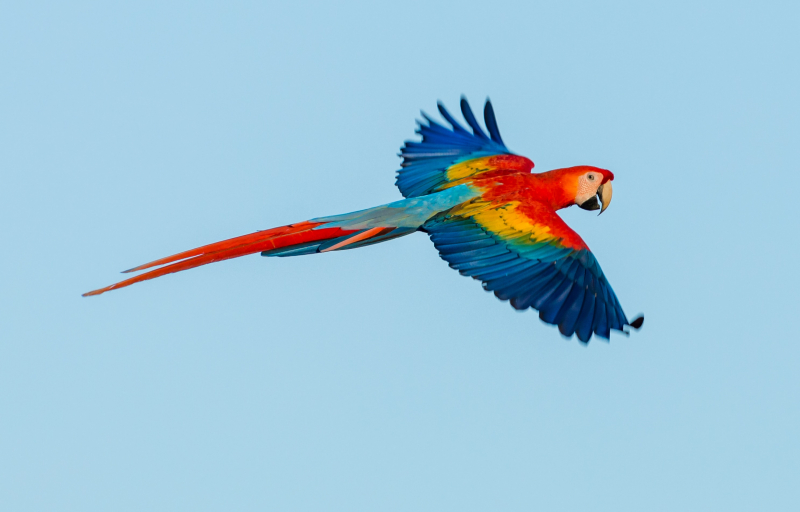
Photo by Zdeněk Macháček on Unsplash: https://unsplash.com/photos/scarlet-macaw-vIx55PnjL58 Video by @GreatBigStory -
Mallards are common ducks and are easily one of the most recognizable waterfowl species in the world. They are large ducks with broad heads, thick necks, and strong bills. Their plumage is distinctive for males, featuring a green head and neck, a chestnut breast, and gray upperparts.
Mallards can be found all over the world, preferring freshwater habitats like ponds, lakes, rivers, and wetlands. They're adaptable and can thrive in various climates, from the Arctic to the tropics. These ducks nest near water, often making their homes in reeds, grasses, or under bushes. They're also known to take over abandoned nests of other birds or even use artificial structures like nest boxes.
Omnivores that feed on vegetation and small animals, mallards, spend their days dabbling and diving in the water for food. They use their broad bills to filter out seeds, plants, aquatic insects, and small fish. In addition to their marine meals, mallards graze on land, enjoying grasses, leaves, and fruits. They're opportunistic feeders and will adapt their diet depending on what's available.
Mallards are social creatures and often form large flocks, especially during migration and winter. They communicate with each other using a variety of vocalizations, including quacks, grunts, and whistles. These ducks are playful and curious, often engaging in swimming chases, splashing water, and preening their feathers. They're also intelligent birds and can learn simple tricks, like coming to a call for food.
Despite their widespread distribution, mallard populations are threatened by habitat loss and pollution. The loss of wetlands, the introduction of invasive species, and hunting pressure pose challenges to these resilient ducks. Conservation efforts are underway to protect mallard habitats and ensure their continued survival.
In a nutshell, Mallards are the quirkily elegant duck family members, bringing their distinctive quacks and vibrant plumage to the waterside scenes they frequent. With their friendly nature, adaptable lifestyles, and importance in ecosystems, they've become the beloved, feathered neighbors of ponds and lakes worldwide
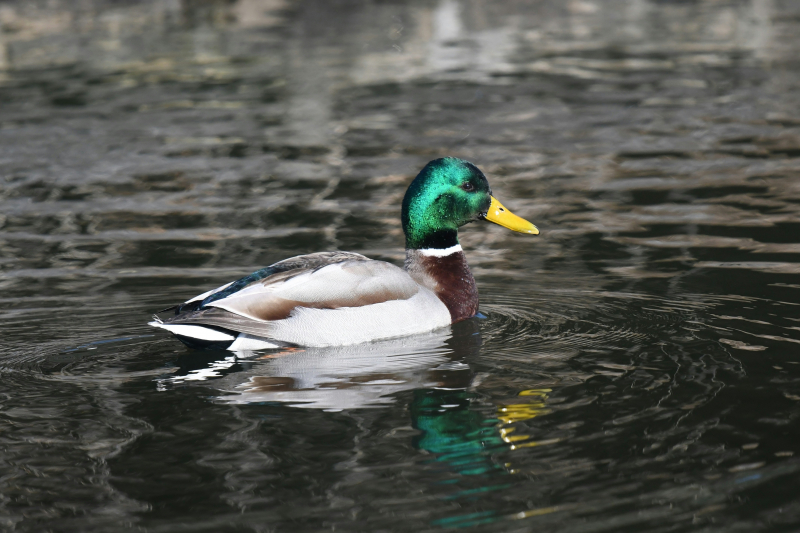
Photo by Joe Cox on Unsplash: https://unsplash.com/photos/duck-floats-on-the-water-z71vsvjPcE4 Video by @MyBirdingYear -
Get ready to dive into the gentle grace of the manatee, a creature so chill it makes sloths look like speed demons. These friendly, lumbering giants of the ocean are more than just adorable faces – they're vital players in keeping our waterways healthy and vibrant.
Manatees live in the warm, shallow waters of coastal areas and rivers in Florida, the Caribbean, and even parts of Africa. Picture lush seagrass meadows, gentle currents, and sunshine galore – that's their playground. These gentle giants can cruise underwater with surprising grace, munching on their favorite snacks and leaving playful trails of bubbles in their wake.
These guys are mighty chompers! Manatees are herbivores, spending their days grazing on seagrass like underwater lawnmowers. Their powerful lips and specially adapted teeth help them munch through even the toughest seagrass, munching up to 10% of their body weight every day! Imagine having to eat that much pizza – manatees are seriously dedicated grazers.
The distinct feature of manatees is their large, paddle-like flippers. These flippers help them navigate through the water with ease, especially in shallow areas. They've been equipped with the perfect aquatic tools for gliding through their coastal habitats.
Manatees might look sleepy, but they have a playful side, too! They enjoy rolling in the mud, nudging each other with their flippers, and even swimming upside down for fun. They're also incredibly curious, often approaching divers and boats for a closer look. Imagine snorkeling alongside a gentle giant – wouldn't that be amazing?
Manatees are the laid-back, herbivorous residents of coastal waters, embodying a sense of calm and harmony in their underwater realms. With their unhurried movements, social gatherings, and plant-based diets, they've become the cherished sea cows that bring a sense of tranquility to the vibrant ecosystems they call home.
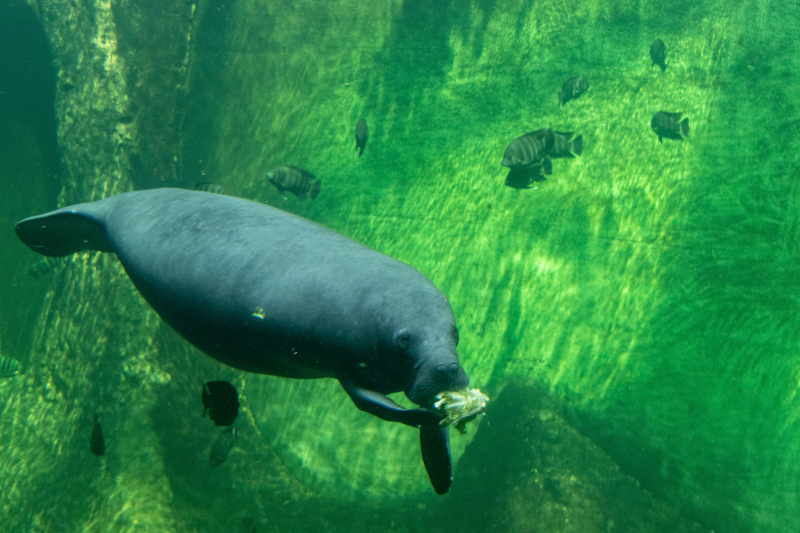
Photo by Jakub Pabis on Unsplash: https://unsplash.com/photos/a-shark-swimming-in-the-water-ZSFWtwW30ZU Video by @NatGeoWild -
Let's look closer at the nocturnal wonders of the insect world – moths. These winged creatures often flutter around our porch lights at night, showcasing various shapes, sizes, and patterns.
Moths live in every corner of the globe, from tropical rainforests to your backyard! They come in all shapes and sizes, from tiny micro-moths smaller than your pinky fingernail to the wingspan-of-your-head luna moth. Some hang out in dark places like caves and basements, while others prefer the cool breeze of the night air.
Moths have a sweet tooth like you wouldn't believe! They're mostly flower feeders, using their long tongues to reach inside blossoms and sip nectar. Some moths are even night-time pollinators, flitting from flower to flower, helping plants spread their pollen and make new seeds. But not all moths stick to a vegetarian diet. Some munch on leaves, while others, like the clothes moth, might nibble at your sweaters.
They're masters of disguise! Some mimic leaves, twigs, or even bark, blending seamlessly into their surroundings to avoid predators. Others have bright, flashy patterns that warn predators they're not tasty treats. And some moths can even see light in the ultraviolet spectrum, a superpower humans don't have!
One unique trait of moths is their ability to produce silk. While not as renowned as their silk-spinning relatives, the silk moths, some species use silk to create protective cocoons for their pupal stages. It's like they've added a touch of silkiness to their already fascinating life cycles.
In a nutshell, moths are the enchanting dancers of the night, bringing their delicate wings and subtle charm to the moonlit hours. Their diverse species, pollination prowess, and unique adaptations make them the nocturnal performers that add a touch of magic to our evenings.
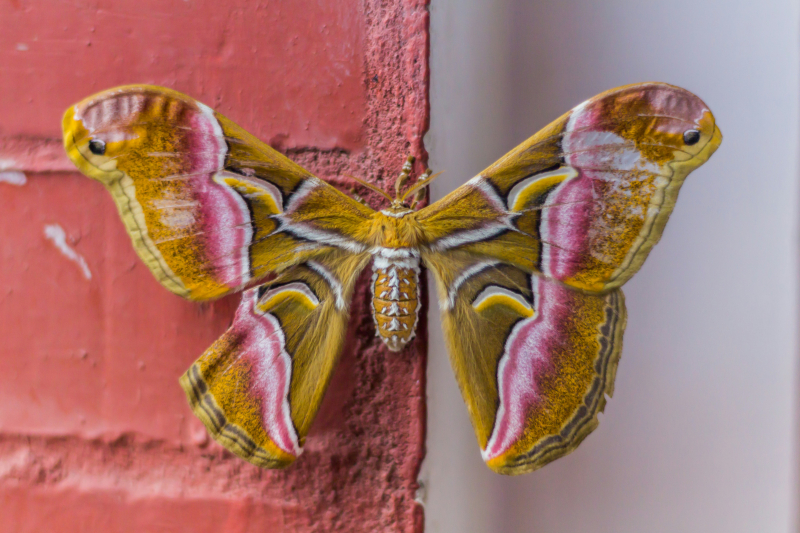
Photo by Aman Shrestha on Unsplas: https://unsplash.com/photos/purple-and-yellow-butterfly-on-brown-wooden-wall-YGJNtff_hSo Video by @TheDodo -
Meet the meerkat, those small, social creatures with a hefty dose of curiosity and a love for standing tall on their hind legs to keep an eye on the world around them. They have a slender body, a bushy tail, and a distinctive face with dark markings around their eyes. They're like the tiny sentinels of the savannah, always on the lookout for adventure and potential threats.
Meerkat mansions are burrows dug deep into the scorching sands of the Kalahari Desert in Africa. These underground tunnels offer cool shade from the blazing sun and shelter from hungry predators. But meerkats don't just dig; they live together in big gangs like furry extended families, sharing responsibilities and watching each other's backs.
Imagine surviving in a hot, dry desert! Meerkats are insect-munching champs, gobbling up scorpions, spiders, beetles, and anything else wriggly they can find. They use their sharp claws and lightning-fast reflexes to dig up these tasty treats and uncover hidden snacks under the sand. It's like a desert buffet every day!
Meerkats are super smart and have a complex social system. They stand on their hind legs like furry sentinels, keeping watch for predators while others forage. They communicate with squeaks, barks, and body language, sharing warnings and keeping their troops safe.
The fascinating aspect of meerkat life is their social structure. Within a mob, an alpha pair usually leads the group, and other members take on specific roles like sentinels, babysitters, and foragers. It's like they've developed a well-organized society where everyone has a job.
Meerkats are the charismatic explorers of the desert, blending boldness with teamwork in their everyday lives. With their distinctive appearance, social dynamics, and playful behaviors, they've become endearing characters that captivate our hearts and remind us of the wonders found in the wild.
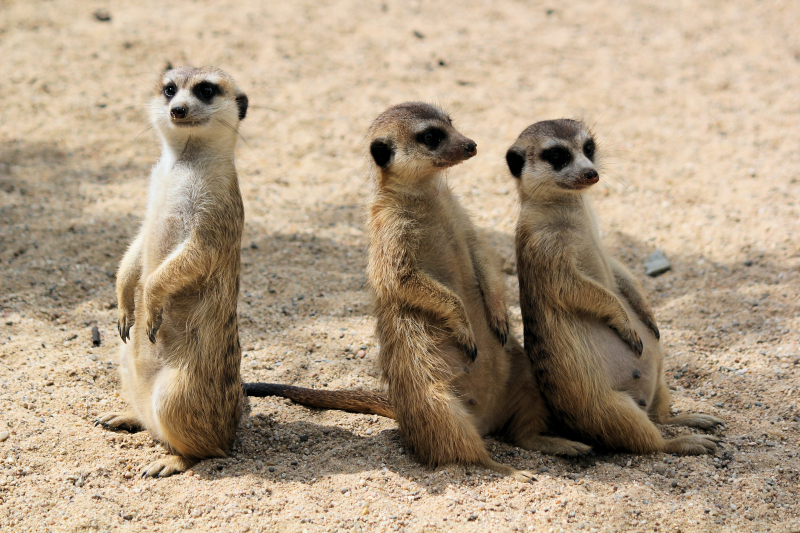
Photo by Dušan veverkolog on Unsplash: https://unsplash.com/photos/three-animals-on-sand-during-daytime-ah7KHxYg6Ow Video by @disneyjunior -
Imagine a sturdy herbivore with a shaggy white coat, robust horns, and a confident gaze – that's the mountain goat. They're like the mountaineers of the animal kingdom, scaling the cliffs and peaks of their alpine homes with a grace that defies the challenging landscapes.
They love the rocky peaks and windswept slopes of high mountains. These nimble climbers call the toughest terrain home from the Alps to the Rockies. They're like furry parkour pros, leaping across crevices, scrambling up rocky faces, and easily navigating icy slopes. Forget hiking boots – these guys have built-in climbing gear in the form of super-grippy hooves and incredible balance.
Mountain goats might not have little fancy restaurants on the mountaintop, but they have a delicious buffet spread across the meadows. They chow down on a variety of mountain plants, from tough grasses to tasty mosses and lichens. Their sharp teeth and strong stomachs can handle even the roughest plant snacks, making them the champions of high-altitude cuisine.
These climbing goats aren't just about scaling walls and chomping on plants. They're surprisingly intelligent creatures! They live in small groups and have complex social structures, with nannies caring for the kids while the dads, called billies, watch for danger. They communicate using snorts, bleats, and even headstands – talk about expressive goats!
One striking feature of mountain goats is their impressive horns, which both males and females possess. These horns are not just for show; they are vital in establishing dominance, especially during the mating season. It's like they've developed their own version of headgear for practical and social purposes.
Mountain goats are the high-flying acrobats of the mountains, blending toughness with elegance in their alpine abodes. With their sure-footed prowess, social structures, and impressive headgear, they've become the iconic residents of the elevated landscapes, reminding us of the wonders of the peaks and cliffs where they roam.
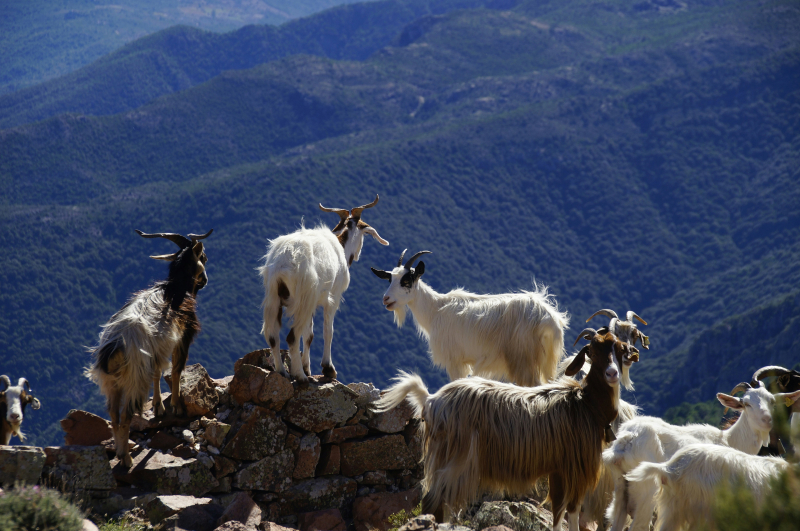
Photo by Jürgen Scheeff on Unsplash: https://unsplash.com/photos/herd-of-goats-on-hill-MwayJLZOVR8 Video by @BBC -
Enter the world of the Maine Coon, those feline giants with tufted ears, bushy tails, and an affectionate demeanor that's as big as their size. The Maine Coon is a cat with long, luxurious fur, tufted ears, and a tuft of fur at the tip of its tail. They're like the gentle giants of the cat world, with a distinctive appearance that makes them stand out in the realm of domestic felines.
Maine Coons aren't fans of cramped apartments – they crave space like lions crave jungle territory. These big cats hail from the harsh winters of Maine, where their thick fur and bushy tails kept them warm as they prowled snowy fields. But don't worry, they're pleased adapting to cozier homes, as long as there's room to roam and climb.
They have a robust and muscular build. Maine Coons are one of the largest domestic cat breeds, with males weighing between 13 to 18 pounds or even more. But they often get along with humans and other pets, earning them the nickname "gentle giants." It's like they've embraced their role as the heavyweight champions of the cat kingdom, proving that big cats can be big softies, too.
Maine Coons have a healthy appetite to match their impressive size. They're carnivores like all cats, feasting on meat and fish with gusto. But hold onto your tuna cans – these playful gourmands might surprise you with their love for water! Yes, water-loving cats exist, and Maine Coons are the champions of splashing, dunking, and even playing fetch with wet toys.
The distinctive feature of Maine Coons is their tufted ears and bushy tails, both of which help them adapt to cold climates. They've been equipped with their own set of winter accessories, making them well-suited for a cozy life indoors or in chilly environments.
In a nutshell, Maine Coons are the gentle giants of the feline world, combining their striking appearance with a friendly and affectionate demeanor. Their sociable nature, vocal expressions, and distinctive physical features make them the adored companions that bring warmth and joy to households lucky enough to share their space.
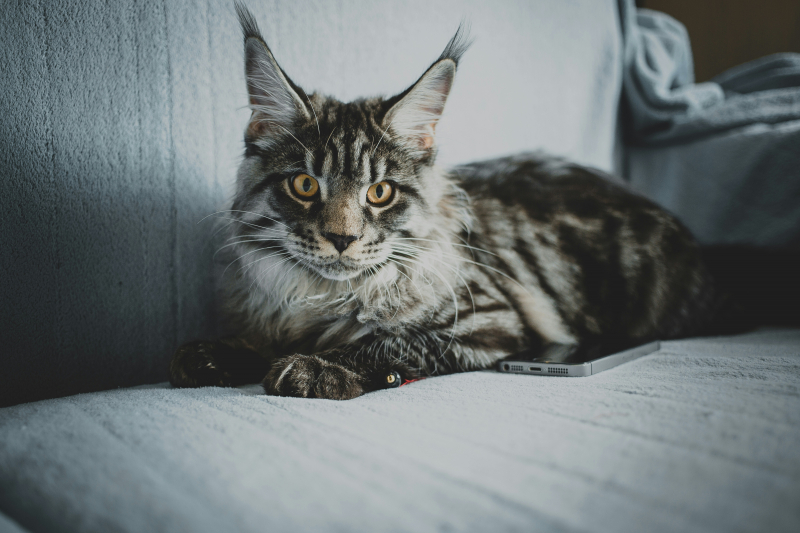
Photo by Sergei Wing on Unsplash: https://unsplash.com/photos/cat-lying-on-sofa-D8RcXNWGNQc Video by @TrendMaxTV -
Hold onto your petals, animal adventurers, because we're about to flit into the magical world of the Monarch Butterfly! These fluttering monarchs aren't just pretty faces with flashy wings – they're champions of metamorphosis, masters of migration, and pollinators in disguise.
They are renowned for their remarkable migrations. These butterflies embark on an epic journey every year, traveling thousands of miles from North America to Mexico or Southern California. It's like they've become the globe-trotters of the butterfly realm, covering vast distances to find warmer climates.
As caterpillars, Monarchs are veggie-loving gourmands, feasting on milkweed leaves. But don't be fooled – this tasty treat comes with a secret superpower! Milkweed makes Monarchs poisonous to predators, a clever trick that keeps them safe from hungry birds and beasts. Imagine having built-in armor made of plants – talk about natural superheroes!
One fascinating aspect of Monarchs is their incredible life cycle. They undergo a complete metamorphosis, transitioning from egg to larva (caterpillar) and pupa (chrysalis), and emerge as majestic butterflies. It's like they've mastered the art of transformation, showcasing the wonders of nature in each stage of their development.
They have a fun side too! They love flitting through flowers, sipping nectar with their long tongues, and soaking up the sunshine. They even do aerial dances and chase each other through the air, bringing bursts of color and joy to meadows and gardens. Imagine having butterfly ballet in your backyard – what a delightful sight!
In a nutshell, Monarch Butterflies are the globe-trotting marvels of the insect world, enchanting us with their vibrant colors and extraordinary migrations. With their communal hibernations, specialized diets, and mesmerizing life cycles, they've become the symbols of resilience and beauty in the natural world, reminding us of the delicate balance in the realm of butterflies.
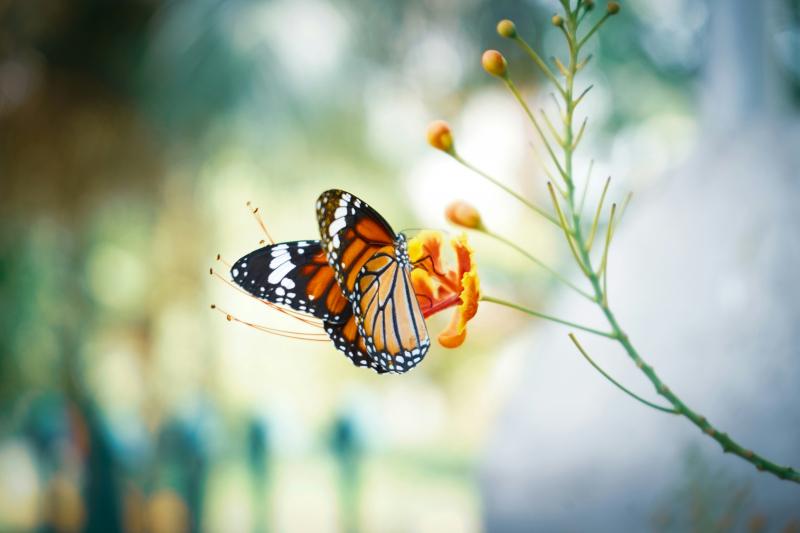
Photo by Calvin Mano on Unsplash: https://unsplash.com/photos/monarch-butterfly-perched-on-orange-flower-in-close-up-photography-during-daytime-CXS27RrJObQ Video by @natgeokids -
Dive into the serene underwater world and meet the Moon Jellyfish, those translucent, gently floating creatures that gracefully drift through the ocean currents. They have a bell-shaped, translucent body and delicate, frilly tentacles. They're like the ethereal dancers of the sea, pulsating gently as they move through the water, creating a mesmerizing display.
Moon jellies call oceans all over the world home, from tropical reefs to chilly bays. They love drifting with the currents, forming shimmering clouds that paint the water with their ghostly glow. Imagine swimming through a sea of jelly lanterns – that's a moon jelly party!
They are like underwater vacuum cleaners! Moon jellies use their delicate tentacles to sweep up tiny plankton and fish eggs, slurping them into their mouths with a gentle pulsing motion. It's like a slow-motion buffet under the waves – these jellies know how to enjoy their meals!
These guys have a neat trick up their translucent sleeves – bioluminescence! They emit a soft, otherworldly glow that adds to their enchanting presence. It's like they've brought a touch of moonlight to the depths of the sea, creating a magical ambiance around them.
Moon jellies might look peaceful, but watch out for that gentle sting! Their tentacles have tiny stinging cells that can give you a little zap if you brush against them. It's not usually serious, but it's an excellent reminder to admire these beauties from a safe distance.
Moon Jellyfish are the celestial ballet dancers of the ocean, with their translucent bodies and gentle movements captivating all who encounter them. With their peaceful nature, group dynamics, and subtle bioluminescence, they've become enchanting symbols of the beauty beneath the waves, reminding us of the delicate harmony in the underwater realms.
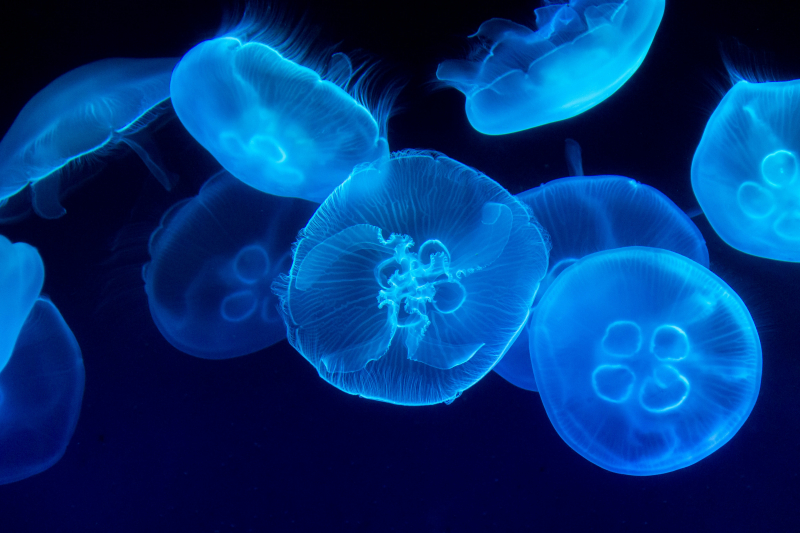
Photo by Marat Gilyadzinov on Unsplash: https://unsplash.com/photos/closeup-photography-of-swarm-of-jellyfish-MYadhrkenNg Viideo by @DeepMarineScenes -
Welcome to the forested realms of the Moose, those majestic, long-legged herbivores that roam the woodlands with a grandeur matched only by their iconic antlers. Imagine a large, sturdy mammal with a humped back, a broad snout, and towering antlers – that's the Moose.
Moose love the cool shade and tasty treats of the forest. From Alaska's icy tundras to Maine's lush woodlands, they call a variety of habitats home. They're like furry loggers, carving their paths through dense forests and leaving behind trails as wide as small trucks! Just imagine the footprints!
They are the largest members of the deer family. With males, known as bulls, boasting impressive antlers that can span up to six feet, they've decided to carry nature's chandeliers on their heads, making a bold statement in the forest. And their long legs are built for steady and efficient walking. It's like they've embraced a more leisurely pace through the wooded landscapes, easily navigating dense forests and shallow waters.
Moose are picky eaters! They're herbivores, feasting on leaves, twigs, and aquatic plants. But they're not just munching machines – they're expert forest gardeners! Their nibbling habits help keep trees and shrubs in check, creating healthier forests for everyone. Talk about eco-friendly snacks!
They love showing off their antlers by snorting, stomping, and even splashing around in water. While bulls shed their antlers annually, cows keep theirs throughout the winter, using them for defense and to clear away snow to access food. They've equipped themselves with multi-functional headgear, a tool for survival and adaptation to their environments.
Moose are the gentle giants of the northern woods, with their towering antlers and sturdy builds making them stand out in the wild. With their familial bonds, unhurried pace, and distinctive antler adaptations, they've become the emblematic creatures that embody the spirit of the wilderness, reminding us of the enchanting wonders of the great outdoors.
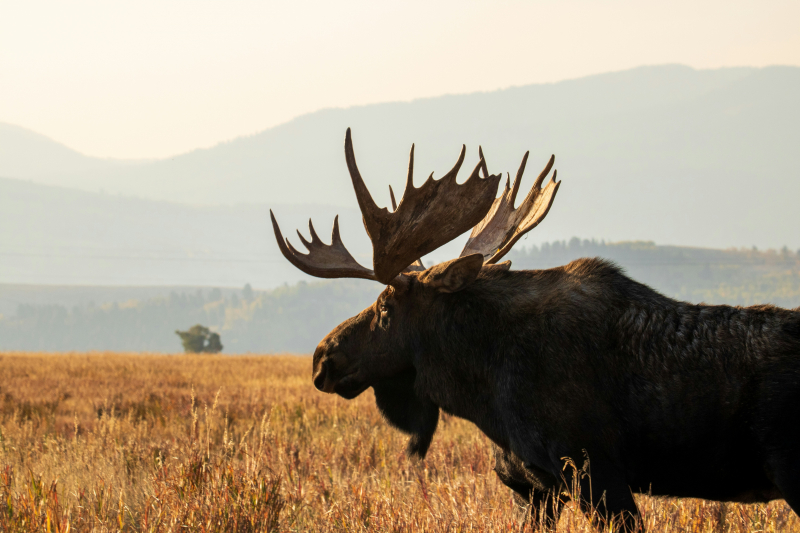
Photo by Cora Leach on Unsplash: https://unsplash.com/photos/black-moose-on-brown-grass-field-during-daytime-kowlD5rb9wE Video by @FreeSchool -
Say hello to the Magpie, those bold, black-and-white birds known for their intelligence, distinctive markings, and a penchant for collecting shiny objects that catch their eye. This bird has sleek black feathers, a white belly, and a long tail. They're like the stylish performers of the avian world, strutting around with a contrasting plumage that makes them easy to spot.
They like living in gardens, parks, and even cityscapes. They're like feathered urbanites, building cozy nests in trees and rooftops, their chatter ringing through the air like a feathered gossip chain. Imagine having your own personal bird news network – that's a magpie neighborhood!
From juicy insects and worms to crunchy fruits and seeds, they're like feathered chefs, whipping up delicious meals from whatever they find. And get this – they even store food away for later! Imagine squirrels with wings – talk about resourceful magpies!
Don't underestimate these black-and-white bandits! In fact, they're considered one of the smartest animals in the bird kingdom. They can mimic sounds like car alarms and human speech, leaving you wondering, "Did that bird just say 'hello'?" They're also problem solvers, using their long beaks and clever minds to open lids and unlock secrets.
One quirky behavior of Magpies is their fascination with shiny objects. They're known to collect and hoard items like coins, jewelry, or even pieces of glass. It's like they've become the treasure hunters of the bird world, adding a touch of curiosity to their character.
Magpies are the clever showstoppers of the bird world, with their striking appearance and intelligent behaviors. With their friendly tendencies, diverse diets, and penchant for collecting shiny treasures, they've become the avian personalities that bring a bit of flair and curiosity to the landscapes they inhabit, reminding us of the fascinating diversity found in the world of birds.
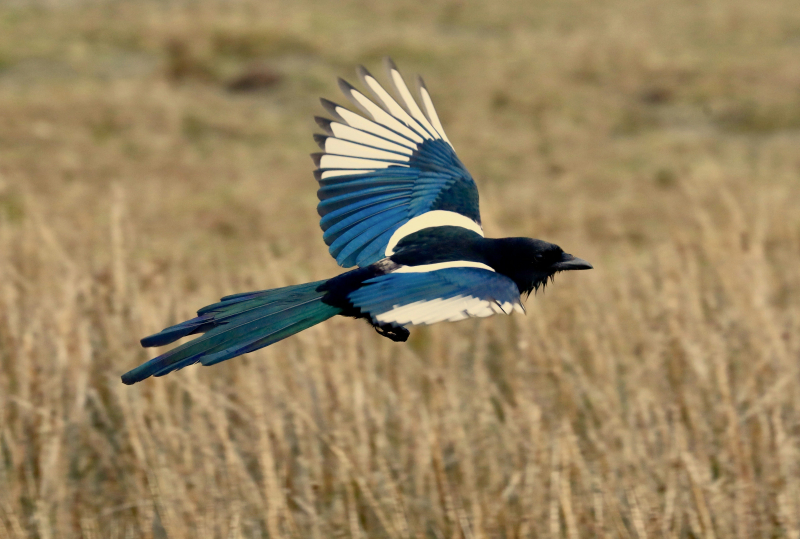
Photo by Proinsias Mac an Bheatha on Unsplash: https://unsplash.com/photos/a-blue-and-white-bird-flying-over-a-dry-grass-field-TvJP28LhkLk Video by @ABCScience -
Meet the mussel, those unassuming bivalve mollusks that quietly play crucial roles in aquatic ecosystems, filtering water and creating homes in the watery depths. Imagine a shell-covered creature with a dark, oblong shell and a fleshy body inside – that's the mussel. They're like the architects of the underwater world, constructing their homes in the form of shells while contributing to the health of aquatic environments.
They craft cozy homes right on rocks, piers, or even the shells of other mussels. They use a super-strong glue called byssus to anchor themselves to their chosen spot, creating a living underwater city that can teem with thousands of these tiny shelled neighbors. Imagine a city made of seashells, bustling with life – that's a mussel metropolis!
These mollusks are not just about their shells; they are excellent water purifiers. Mussels feed by filtering microscopic particles from the water, helping to improve water quality. It's like they've taken on the roles of both architects and environmental engineers, crafting their shells while contributing to the cleanliness of their aquatic homes.
Mussels are not limited to freshwater habitats; some species thrive in both freshwater and marine environments. It's like they've embraced adaptability, making themselves at home in a variety of watery landscapes, from rivers and lakes to coastal areas.
The intriguing aspect of mussels is their method of reproduction. They release larvae into the water, which then attach to surfaces and develop into new mussels. It's like they've adopted a strategy that ensures the continuation of their mussel communities, allowing them to thrive in their aquatic abodes.
In a nutshell, mussels are the unsung heroes of aquatic ecosystems, with their shell-building prowess and water-filtering capabilities. With their communal living arrangements, adaptability to various environments, and unique reproductive strategies, they've become the unassuming custodians of the underwater realms, quietly contributing to the balance and vitality of aquatic ecosystems.
Video by @zefrank

















